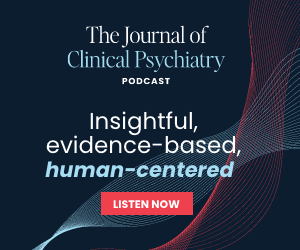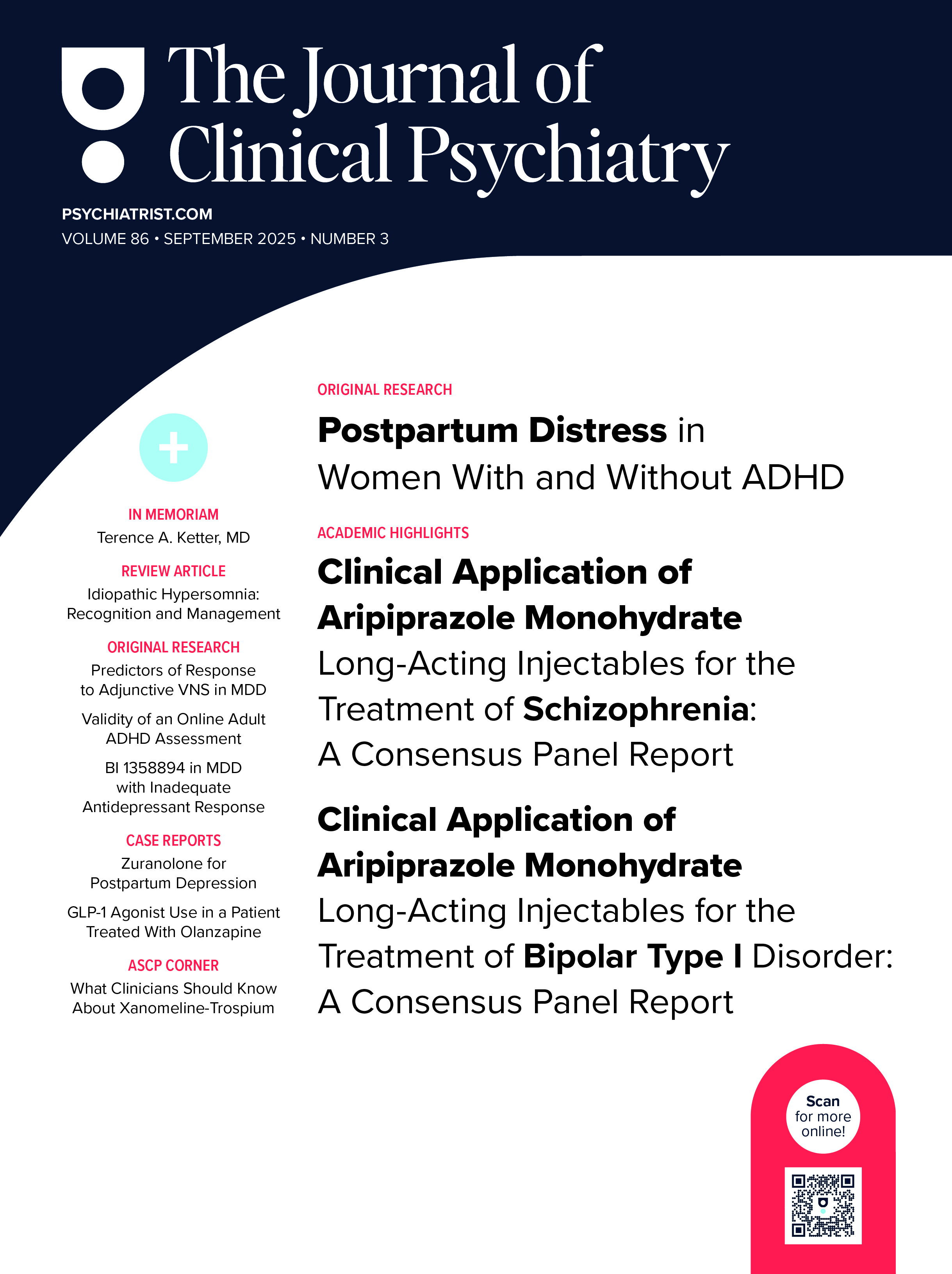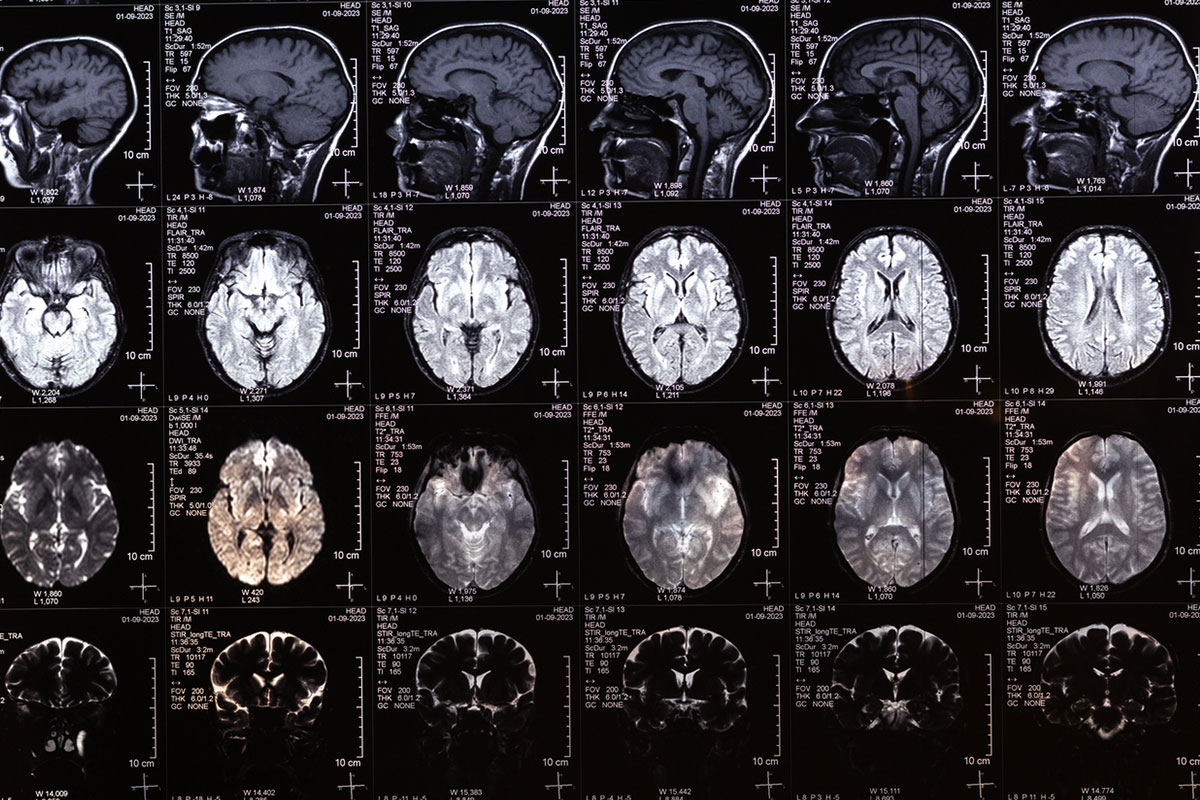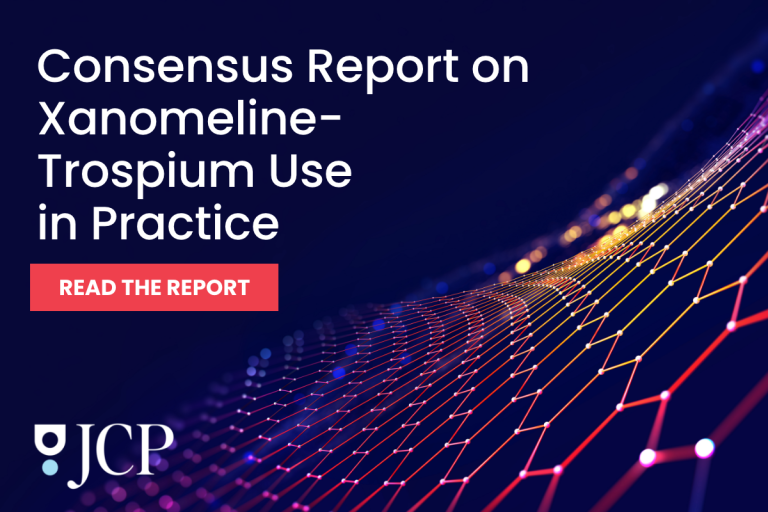See article by Meisner et al
To the Editor: We read with great interest Meisner and colleagues’ report1 comparing intravenous (IV) racemic ketamine with intranasal (IN) esketamine in treatment-resistant depression (TRD), showing faster and greater symptom reduction with IV ketamine, consistent with prior meta-analytic evidence.2 This observation is biologically plausible and, in our view, attributable in part to enantiomer pharmacology.3 Racemic ketamine comprises equimolar (R)-ketamine (arketamine) and (S)-ketamine (esketamine). Preclinical work—including that by our group and independent replications—indicates that arketamine confers stronger and longer-lasting antidepressant effects than esketamine despite weaker N-methyl-D-aspartate receptor (NMDAR) affinity,4,5 together with fewer psychotomimetic/dissociative effects and lower abuse liability in rodents and humans.4,6 The racemate’s superiority over IN esketamine therefore likely reflects the pharmacodynamic contribution of the R-enantiomer, which is absent from the IN esketamine.
Side effect patterns further support mechanisms beyond primary NMDAR antagonism. Dissociation after ketamine/esketamine administration does not correlate with antidepressant benefit across multiple clinical studies.7 Because dissociation is generally attributed to NMDAR blockade, this dissociation–efficacy disconnect implies that additional pathways—such as brain-derived neurotrophic factor (BDNF)-TrkB signaling and downstream synaptogenic cascades—are critical mediators of clinical response.3,7,8 Notably, arketamine may preferentially engage these plasticity-related pathways, offering a parsimonious explanation for the durability and tolerability signals observed in preclinical models.3,8
Real-world pharmacovigilance also supports enantiomer-related differences. WHO VigiBase analyses show higher disproportionality for suicidal ideation with esketamine, whereas ketamine shows lower disproportionality for ideation, suicide attempts, and completed suicide; for attempts and completed suicide, both agents have lower reporting odds than lithium.9 Although disproportionality cannot prove causation and is susceptible to reporting bias, these signals suggest clinically meaningful differences between racemic ketamine and esketamine. Pharmacokinetics (PKs) likely contribute: IV dosing provides complete, controlled exposure, whereas IN delivery has lower, more variable bioavailability due to mucosal and technique factors—plausibly slowing onset and reducing effect size with IN esketamine. Nonetheless, PK alone does not account for the findings; enantiomer-specific pharmacodynamics remain a compelling explanation.
A recent commentary10 rightly underscored limitations of retrospective, nonrandomized cohorts and highlighted public-health safeguards, yet it did not address arketamine’s role. Emphasizing socioeconomic and regulatory factors without considering enantiomer pharmacology risks obscuring the contribution of arketamine in the racemate. Future comparative-effectiveness studies and randomized trials should prespecify enantiomer-stratified analyses (including IV arketamine), harmonize route and dosing, and rigorously account for socioeconomic variables.
Taken together, Meisner et al1 highlight the need for well-controlled, prospective comparisons among arketamine, esketamine, and racemic ketamine to disentangle enantiomer-specific effects and optimize TRD care. Given its efficacy and tolerability profile, the clinical development of arketamine appears particularly promising.3,8 In conclusion, the data by Meisner et al1 strengthen the case that IV racemic ketamine is more effective than IN esketamine in TRD; convergent preclinical and clinical findings support the hypothesis that arketamine plays a key role in this superiority and that ketamine’s antidepressant mechanisms extend beyond simple NMDAR antagonism. A randomized head-to-head trial of arketamine versus esketamine in TRD is warranted.8
Article Information
Published Online: October 29, 2025. https://doi.org/10.4088/JCP.25lr16166
© 2025 Physicians Postgraduate Press, Inc.
J Clin Psychiatry 2026;87(1):25lr16166
To Cite: Tan Y, Hashimoto K. Racemic ketamine vs esketamine in treatment-resistant depression: the overlooked role of arketamine. J Clin Psychiatry. 2026;87(1):25lr16166.
Author Affiliations: Center for Rehabilitation Medicine, Department of Psychiatry, Zhejiang Provincial People’s Hospital (Affiliated People’s Hospital), Hangzhou Medical College, Hangzhou, Zhejiang, China (Tan); Chiba University Center for Forensic Mental Health, Chiba, Japan (Hashimoto); Department of Anesthesiology, Pain and Perioperative Medicine, the First Affiliated Hospital of Zhengzhou University, Zhengzhou, China (Hashimoto); Basic Medicine Research Innovation Center for Cardiometabolic Diseases, Ministry of Education, Southwest Medical University, Luzhou, Sichuan, China (Hashimoto).
Corresponding Author: Kenji Hashimoto, PhD, Chiba University, 1-8-1 Inohana, Chiba, 260-8670 Japan ([email protected]).
Relevant Financial Relationships: Dr. Hashimoto is the inventor of filed patent applications on “The use of R-Ketamine in the treatment of psychiatric diseases,” “(S)-norketamine and salt thereof as pharmaceutical,” “R-Ketamine and derivative thereof as prophylactic or therapeutic agent for neurodegeneration disease or recognition function disorder,” “Preventive or therapeutic agent and pharmaceutical composition for inflammatory diseases or bone diseases,” and “R-Ketamine and its derivatives as a preventive or therapeutic agent for a neurodevelopmental disorder” by the Chiba University. Dr. Hashimoto has also received research support from Otsuka (Tokyo, Japan). Dr. Tan has no conflicts of interest to disclose.
Funding/Support: The authors declare no financial support related to this letter.
Use of AI-Assisted Technologies in the Writing Process: ChatGPT (OpenAI) was used for language editing to improve clarity and readability; the authors reviewed and take full responsibility for the content.
References (10)

- Meisner R, Li S, Boyle B, et al. Comparative effects of repeated ketamine infusion versus intranasal esketamine in patients with treatment-resistant depression: a retrospective chart review. J Clin Psychiatry. 2025;86(4):25m15789. PubMed CrossRef
- Bahji A, Vazquez GH, Zarate CA Jr. Comparative efficacy of racemic ketamine and esketamine for depression: a systematic review and meta-analysis. J Affect Disord. 2021;278:542–555. PubMed CrossRef
- Hashimoto K, Zhao M, Zhu T, et al. Ketamine and its two enantiomers in anesthesiology and psychiatry: a historical review and future directions. J Anes Transl Med. 2024;3(3):65–75. CrossRef
- Yang C, Shirayama Y, Zhang JC, et al. R-ketamine: a rapid-onset and sustained antidepressant without psychotomimetic side effects. Transl Psychiatry. 2015;5(9):e632. PubMed CrossRef
- Zanos P, Moaddel R, Morris PJ, et al. NMDAR inhibition-independent antidepressant actions of ketamine metabolites. Nature. 2016;533(7604):481–486. PubMed CrossRef
- Leal GC, Lima-Araújo I, Roiter DG, et al. Arketamine: a scoping review of its use in humans. Eur Arch Psychiatry Clin Neurosci. 2025;275(5):1317–1332. PubMed
- Hashimoto K. Are “mystical experiences” essential for antidepressant actions of ketamine and the classic psychedelics?. Eur Arch Psychiatry Clin Neurosci. 2025;275(5):1333–1346. PubMed CrossRef
- Hashimoto K. Extending ketamine’s antidepressant effects. Science. 2025;388(6747):589–590. PubMed CrossRef
- Kwan ATH, Lakhani M, Rosenblat JD, et al. A global population-based study on the association between ketamine and esketamine with suicidality using WHO VigiBase. J Clin Psychiatry. 2025;86(3):24m15534. PubMed CrossRef
- Wilkinson ST, Rhee TG. Ketamine and esketamine: is there meaningful clinical difference? J Clin Psychiatry. 2025;86(4):25com16003. PubMed CrossRef
This PDF is free for all visitors!





